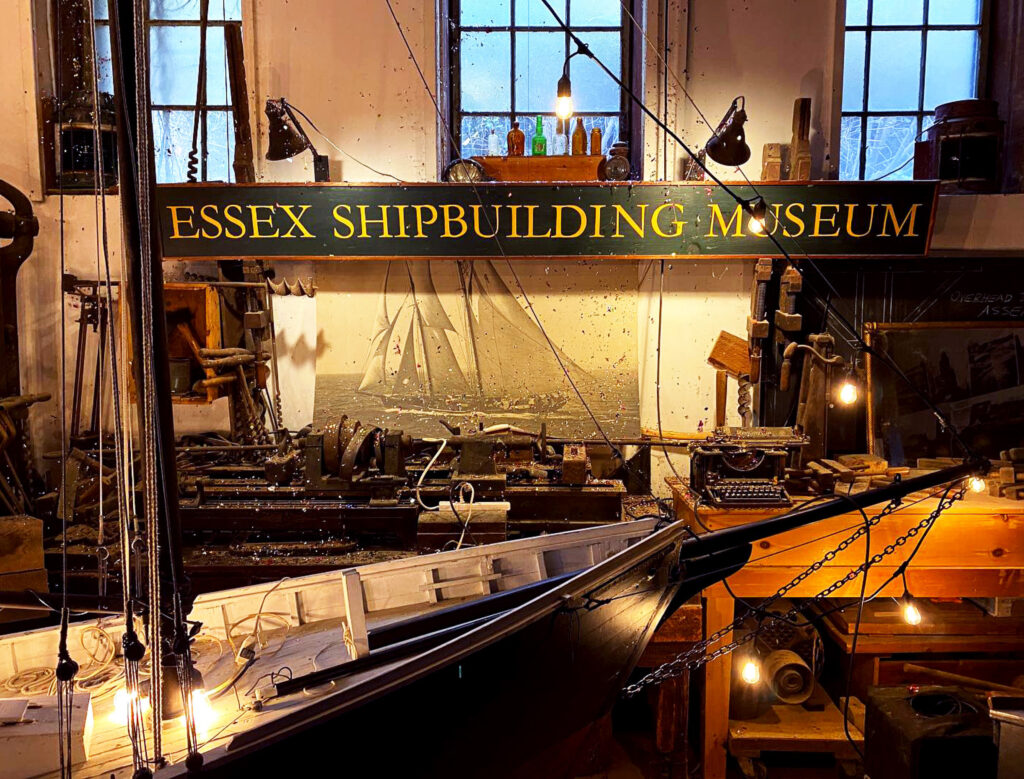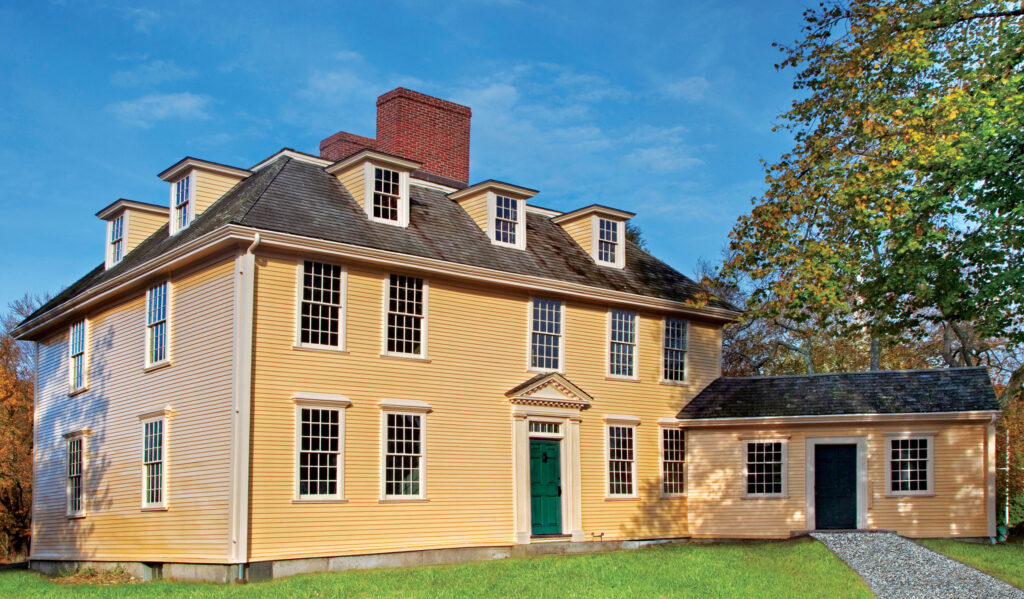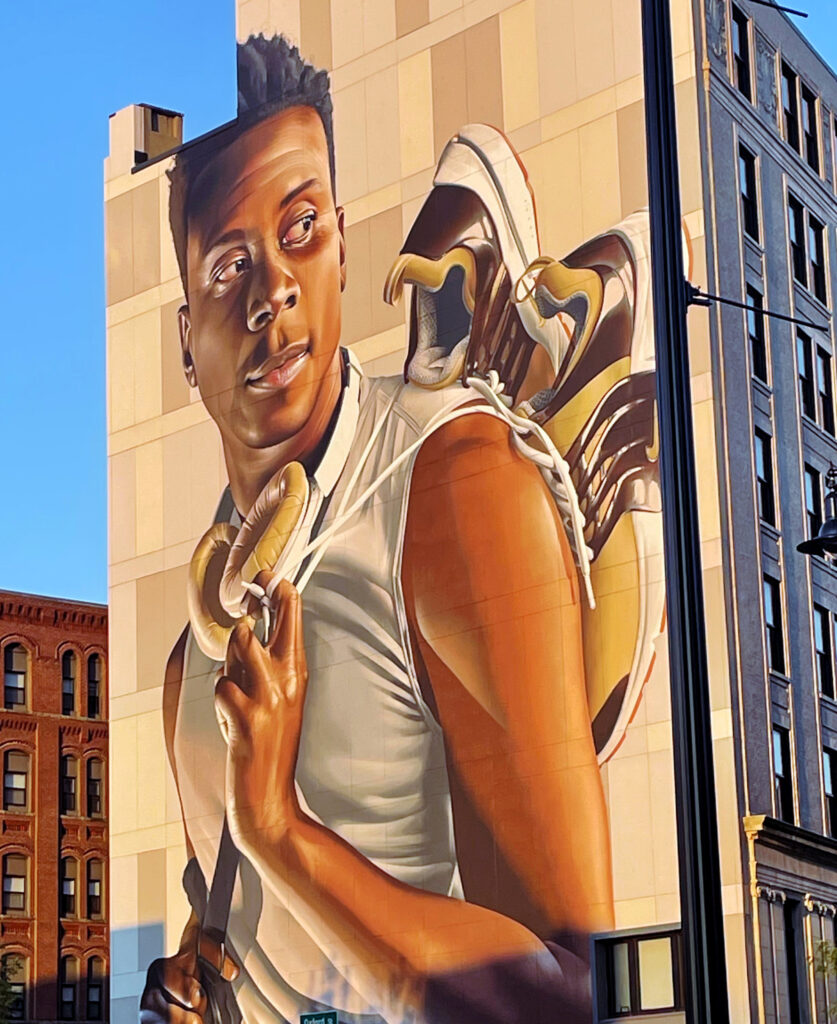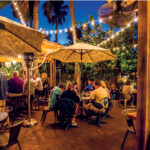Explore the Vibrant Cultural Districts Just North of Boston
Revive your zest for life in these creative zones with local Massachusetts character.

You’ll encounter Homage to Women, a larger-than-life sculpture by James Higgins, at Market Mills Park within the Lowell National Historical Park in Lowell.
Photo Credit: Greater Merrimack Valley Convention & Visitors BureauSponsored by Visit North of Boston and the Greater Merrimack Valley Convention & Visitors Bureau
New Englanders are extraordinarily spoiled with day-trip options. That’s especially the case for those who live within an easy drive of the region north and west of Boston, where impressive cultural districts draw visitors with their vibrant art scenes and lively events and festivals.
In Massachusetts, officially designated cultural districts are compact, walkable areas where a community tends to congregate, serving as town centers for artistic activity. These localities vary—as the cultural makeup of each one is unique—and that’s the joy of discovering all 14 that give this region its creative heartbeat. Visit a cultural district on the coast, another set on a river, and you’ll experience the wondrous geographic variety that awaits here, too.
All 14 cultural districts are showcased in the free Just North of Boston digital guide, and here’s a preview of six to give you a sense of their day-trip appeal.
Lowell’s Canalway Cultural District
There are three unique ways to experience Lowell’s Canalway Cultural District: by boat, by trolley, and by taste. First, Lowell National Historical Park takes visitors with advance tickets on mini-cruises, exploring the history of Lowell’s waterpower system. If you’d prefer to stay on land, the park also provides vintage-streetcar rides for free, with conductors calling out points of interest and historical details along the route. Operation varies by season, so it’s a good idea to check the schedule ahead of time.
Then there are the restaurants. As you weave among waterways on cobblestone streets, you’ll encounter a cornucopia of cuisines representing the city’s melting pot of cultures. Sample a bit of everything from fried seafood to Asian and South American fare.
And once you’ve had your fill of treats, mosey down the Lowell Riverwalk, then head over to the Western Avenue Studios complex for a self-guided tour. With more than 350 artists working in 250 studios and 50 live-work lofts, it’s the largest artist community on the Eastern Seaboard.
Rockport Cultural District
Rockport has long been a beacon for artists and painters looking to capture its coastal beauty. So it’s no surprise that its cultural district counts more than 40 galleries and studios. It’s also home to one of the oldest active art associations in the country, the Rockport Art Association. Moreover, you’ll find what is said to be the American building most often rendered in paintings: Motif Number 1, a charming red fishing shack bedecked with buoys.
Upon arriving, drop by one of the area’s many coffeeshops for a cup of something warm and energizing. You’ll need the jolt to explore all the shingled shops and galleries lining Bearskin Neck, and for your time spent breezily tracing the edges of Rockport Harbor. A lobster roll is a necessary addition to your itinerary, as is catching a concert at the Shalin Liu Performance Center, where an expansive wall of glass reveals a stunning seascape backdrop for performances.

Photo Credit : Essex Historical Society & Shipbuilding Museum
Essex River Cultural District
This fluvial locale stretches a mile along Essex’s Main Street, from the corner of Spring Street at its western edge to the old Methodist Episcopal Church at its eastern boundary. It’s bisected by the eponymous Essex River, underscoring the area’s celebration of its nautical legacy, art-inspiring scenery, and dedication to environmental preservation.
Packed with loads of culture and history, the district winds through active shipyards and marinas, antique shops, bustling restaurants, pocket parks, galleries, and historical burial grounds. The town’s rich history of shipbuilding is highlighted as well, thanks to views of Burnham’s Shipyard and the presence of the Essex Historical Society and Shipbuilding Museum, which houses an impressive collection of marine antiquities. But what sets this region apart is its salt-marsh views. They’re perhaps best enjoyed with a side of fried clams from one of the many open-air seafood establishments lining Main Street.
West Concord Junction Cultural District
The “junction” in question is the old crossing of the Fitchburg and Framingham/Lowell Railroads, where the distinctive 19th-century yellow depot building still stands. The Fitchburg Commuter Rail continues to rumble along the old tracks about once every hour. While this intersection used to see about 100 trains pass through every day, today’s village carries on the bustle with eateries, artisanal shops, art galleries, live performances, and outdoor activities.
While you’re there, be sure to reach out and touch the “Poetry Phone,” a public-art installation offering the chance to listen to spoken word in a solar-powered phone booth. Pick up the receiver to hear one of nine compositions, which change throughout the year. After you hang up, say hello to a nearby bakery or gourmet-food shop and treat yourself to a picnic alongside the Bruce Freeman Rail Trail or on the banks of the Assabet River.

Photo Credit : Greater Merrimack Valley Convention & Visitors Bureau
Lexington Cultural District
History abounds in the Lexington Cultural District, which roughly follows the path of the Minuteman Bikeway. Consider bringing or renting a bike to cruise on wheels between your sightseeing destinations. Along the way, you’ll pass meadows and parks, the Brown Homestead conservation area, the Lexington Minutemen Memorial sculpture, and Buckman Tavern—plus several other structures which were present at the Battle Green during the first skirmish of the American Revolutionary War.
When you’re ready to ditch pedaling for a more leisurely sidewalk stroll, head to Massachusetts Avenue to take your time at a multitude of art galleries, studios, ice-cream shops, cafés, and bakeries, many housed within long-standing architectural marvels.

Photo Credit : Holly Perry/North of Boston Convention & Visitors Bureau
Downtown Lynn Cultural District
Public art is only the beginning in this cultural hub that celebrates local artists and creators. You’ll first notice colorful murals splashing the walls of buildings and overpasses; one standout is “The Resident.” Painted by Glasgow-based artist Smug One, this towering work is an expressive portrait of a Lynn community member named Ferns.
Beyond the murals and installations, you’ll find galleries, green spaces, performance venues, eclectic shops, and bountiful dining options. But behind the scenes, the city works to connect artists with resources. That includes support ranging from championing maker spaces like the Brickyard Collaborative to awarding Lynnspire Grants to Lynn-based creatives.
Downtown Lynn is also a flourishing events center, with farmers’ markets, poetry readings, festivals, and even drum circles. When you’re there, you’ll see the district’s vision in action: opening up opportunity and access for everyone.
Explore eight more cultural districts in the free Just North of Boston digital guide.



